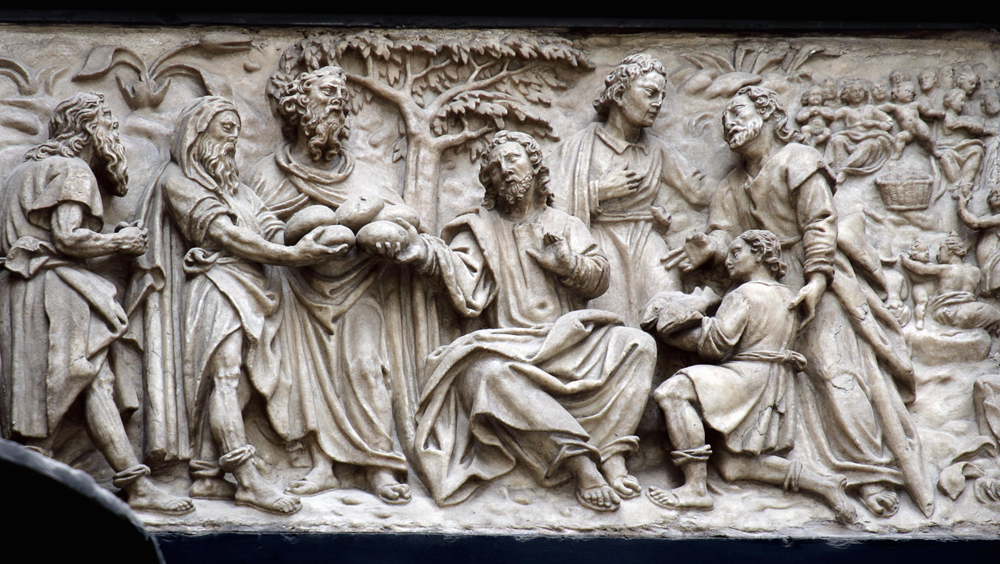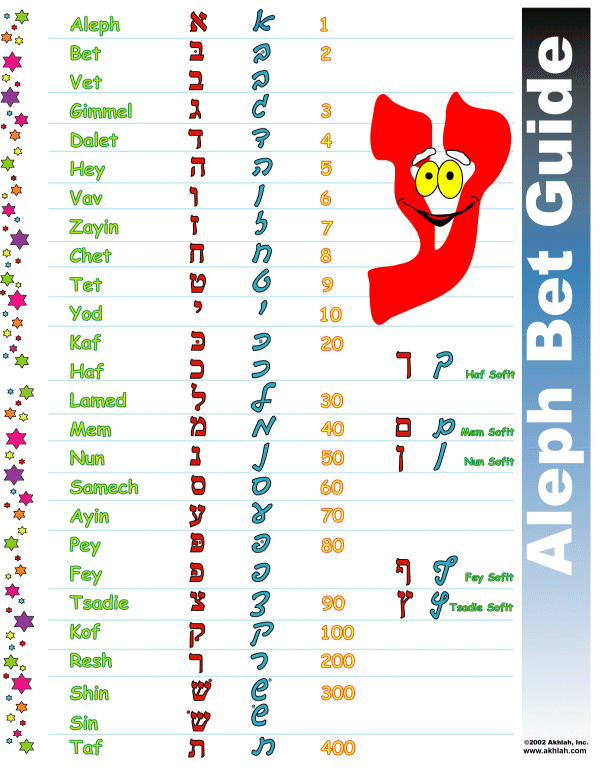This is the first in a two-part series offering a Hebraic view of the miracle of feeding the five thousand.

Victoria & Albert Museum
One of the most familiar Bible stories is that of Yeshua (Jesus)[1] feeding the five thousand. This amazing and encouraging story is the only one of Messiah’s miracles recorded in all four gospels. Since all four gospel writers deemed this event significant, there must be some deeper meaning to it than is apparent in a casual reading. Yeshua demonstrated His compassion and ability to meet human needs, but He also taught His disciples a valuable lesson in faith and in doing the will of God. By satisfying the hunger of 5,000 men and the women and children with them, Yeshua brought the Kingdom of God into their midst in ways none of them had experienced before, and He did so in a demonstration of Holy Spirit power. What more could there be to the feeding of the five thousand than this? Much indeed. In this one miracle, Yeshua provided a sign of His Messiahship, a teaching on the seven thousand year plan of God, and a prophecy about the end of this age.
Lunch in the Wilderness
This miraculous feeding of a large crowd happens soon after Yeshua hears the reports from the disciples who had returned from their first missionary expedition. He takes them aside to an isolated location where they can rest, but it is not long before the multitude finds them. What happens next is recorded in Matthew 14:13-21, Mark 6:30-44, Luke 9:10-17, and John 6:1-14. All four accounts are essentially the same, but Mark’s version adds a few important details:
Then the apostles gathered to Jesus and told Him all things, both what they had done and what they had taught. And He said to them, “Come aside by yourselves to a deserted place and rest a while.” For there were many coming and going, and they did not even have time to eat. So they departed to a deserted place in the boat by themselves. But the multitudes saw them departing, and many knew Him and ran there on foot from all the cities. They arrived before them and came together to Him. And Jesus, when He came out, saw a great multitude and was moved with compassion for them, because they were like sheep not having a shepherd. So He began to teach them many things. When the day was now far spent, His disciples came to Him and said, “This is a deserted place, and already the hour is late. Send them away, that they may go into the surrounding country and villages and buy themselves bread; for they have nothing to eat.” But He answered and said to them, “You give them something to eat.” And they said to Him, “Shall we go and buy two hundred denarii worth of bread and give them something to eat?” But He said to them, “How many loaves do you have? Go and see.” And when they found out they said, “Five, and two fish.” Then He commanded them to make them all sit down in groups on the green grass. So they sat down in ranks, in hundreds and in fifties. And when He had taken the five loaves and the two fish, He looked up to heaven, blessed and broke the loaves, and gave them to His disciples to set before them; and the two fish He divided among them all. So they all ate and were filled. And they took up twelve baskets full of fragments and of the fish. Now those who had eaten the loaves were about five thousand men. (Mark 6:30-44 NKJV, emphasis added)
Two things of note in Mark’s version of the story are his attention to numbers and his care in telling us what happened separately to the loaves and to the fish. These are important details that a casual reader would miss. Mark specifies that the cost of feeding the crowd would be more than two hundred denarii, and then tells us twice that there are five loaves and three times that there are two fish. He also notes that Yeshua gave the bread to the disciples to distribute, but that Yeshua Himself distributed the fish. Finally, Mark explains that those who ate of the loaves (not the fish) were about five thousand men, and that the disciples took up twelve baskets of fragments of the bread in addition to the remains of the fish.
What does all this mean? The answer comes by looking at the passage with Hebraic eyes to discern the lessons that our Hebrew Messiah was teaching His Hebrew followers.[2]
Hebrew, like many other ancient languages, assigns meanings and numerical values to letters. Those meanings and values impart a more complete picture of God’s intent in both the Hebrew and Greek scriptures. In this story of feeding the five thousand, the first number we encounter is two hundred, when the disciples tell Yeshua that not even two hundred denarii worth of bread would be enough to feed the people. The numbers in question are two and its multiple, two hundred. Two is the value assigned to Bet (ב), the second letter of the Hebrew aleph bet (alphabet). Two means division or difference, and on the highest level refers to the balance or interaction between God and man.[3] The meaning of Bet is “house”. When a man builds a house, he first takes a wife so he can have children by her. God showed us this by example. We know that the Son of God, Messiah Yeshua, has a Bride, and that through Him come sons of God, saved by grace through faith in Yeshua (Isaiah 62:5; John 3:29; Revelation 21:9; Hosea 1:10; Romans 8:14-19; Galatians 3:26, 4:1-6; Ephesians 2:8-9). There is an ancient Hebrew teaching explaining how this is expressed in the very first letter of the Bible, an enlarged Bet in the word beresheet (בְּרֵאשִׁית), translated “In the beginning”.[4]
The number two hundred equates to the letter Resh (ר), which means “person, highest”.[5] In scripture this number often indicates insufficiency, and in this instance it means that the best the disciples could offer would be insufficient to feed the crowd.[6] Thus from the start we understand that Yeshua will be teaching something about the interaction of God with humans, specifically how God will bridge the gap where the insufficiency of human means falls short of the need.
Seven Thousand Years = Seven Days
The next numbers we encounter are five (loaves of bread) and two (fish), which together make seven. Both food items are associated with Yeshua. He identified Himself as the Bread of Life (John 6:22-58; Matthew 26:26; Mark 14:22; Luke 22:19; I Corinthians 11:24), so the connection with the bread provided to the hungry multitude is easy to see. The connection with the fish is something we shall cover shortly. For now it is important to note that the seven items given to feed the people show something about the seven thousand year plan of God.
Seven is the number of perfection and of completion, but its true significance is in showing us the plan of God to redeem and restore His creation.[7] This is apparent in the first chapter of the Bible, where God creates the world in six days and rests on the seventh. Each day equates to a period of one thousand years, culminating in the seventh, the “Day of the Lord”, which is the Messianic Age of rest for the entire earth. The Apostle Peter explains to us that, “with the Lord one day is as a thousand years, and a thousand years as one day” (II Peter 3:8 NKJV). Peter was referring to Psalm 90:4, a prayer of Moses, which says:
For a thousand years in Your sight are like yesterday when it is past, and like a watch in the night. (Psalm 90:4 NKJV)
Five of these thousand year “Days” are periods when God works exclusively through humans to achieve His intent, but on the other two “Days” God personally intervenes in human affairs, first to redeem and then to restore His creation. Those are the two comings of Messiah.[8] Yeshua came the first time at the end of the fourth millennium after creation to take all the sin of the world on Himself and die as the perfect sacrifice. As God’s Passover Lamb, Yeshua accomplished the work of redemption from the curse of the law of sin and death (Genesis 22:8; John 1:29; Romans 6:1-14). Then He returned to His Father in heaven. There He waits until the dawn of the Seventh Day, when He will return as King of Kings to judge and rule the nations and repair the ravages of six millennia of sin (Isaiah 1:24-26, 44:21-28, 49:1-13; Jeremiah 16:14-21; Ezekiel 20:33-38, 39:21-29; Micah 2:12-13; Zechariah 9:11-17; Revelation 19:11-16).[9]
As a sign of this great plan, Yeshua had his disciples distribute the fives loaves, but He Himself distributed the two fish. The meaning is this: in five of the seven Days, God’s servants deliver the Bread of Life that He has provided through His Word, meaning specifically the written Word recorded by Moses, the Prophets, and the Apostles (Psalm 68:11), but in the Fourth and Seventh Days, Messiah Himself will deliver nourishment since He is the Living Word of God (Isaiah 2:3; Micah 4:2; John 1:1-16).
Click here to continue to Part II
[1] The name Jesus is the English rendition of Messiah’s Hebrew name, Yeshua, which means “Salvation”. His title, Messiah (Anointed One), is translated into English as “Christ”. My preference is to refer to our Savior as Messiah Yeshua, but I will be quoting from the New King James Version of the Bible, which refers to Him as Jesus Christ.
[2] The Apostolic Writings (New Testament) are in Greek, but the events they record, particularly in the Gospels, occurred in a Hebrew or Aramaic setting. Yeshua as a first century Jew lived in a Hebraic culture and most certainly taught His disciples in Hebrew and in Aramaic. It is not only logical, but essential, to approach His teachings and those of the Apostles from a Hebraic perspective.
[3] E. W. Bullinger, Number in Scripture: Its Supernatural Design and Spiritual Significance, 4th Ed., Rev. London, Eyre & Spottiswoode (Bible Warehouse) Ltd., 1921, p. 83.
Monte W. Judah, “Heritage of Abraham: Foundations of the Faith Presentation Materials”, Lesson 4, Lion and Lamb Ministries, Norman, OK, 2009.
[4] Monte W. Judah, “The Jots and Tittles of Moses”, in YAVOH, He Is Coming, Lion and Lamb Ministries, Norman, OK, July 2004, http://lionlamb.net/v3/YAVOH-HeisComing/2004/07.
[8] The following chart is reproduced, with some modification, from Monte Judah, “Heritage of Abraham”.
|
Creation Day |
Created |
1000 Year Period |
|
1 |
Light, Darkness | Adam created. Told if he sinned he would die in that day (he lived 930 years). |
|
2 |
Waters, Heavens | Noah and the flood |
|
3 |
Plants with seeds | Abraham, Isaac, Jacob. Abraham told in his seed all the families of the world would be blessed (Planting of the Lord) |
|
4 |
Lights in the Heavens | Kings, Prophets, those who show the things of God, regarded as lights in the heavens (Daniel 12:3). |
|
5 |
Living Creatures | Messiah’s first coming (at the end of the Fourth Day, beginning of the Fifth Day) to make us new living creatures. |
|
6 |
Man | Man to fill the earth and subdue it. |
|
7 |
Sabbath | The Last (Seventh) Day. Messiah returns to judge the nations and rule from Jerusalem. |
[9] Detailed teachings on Messiah’s two comings on the Fourth and Seventh Days are available through 119 Ministries at http://119ministries.com/brit-hadasha-series-part-2-4th-and-7th-day-part-1 and http://119ministries.com/brit-hadasha-series-part-2-4th-and-7th-day-part-2.


